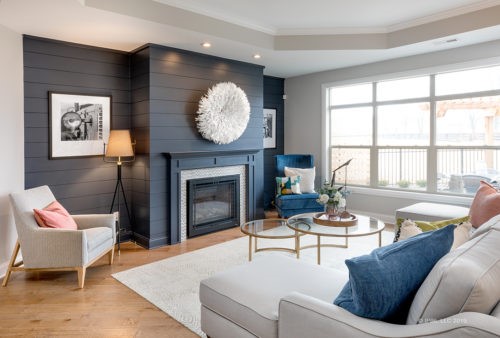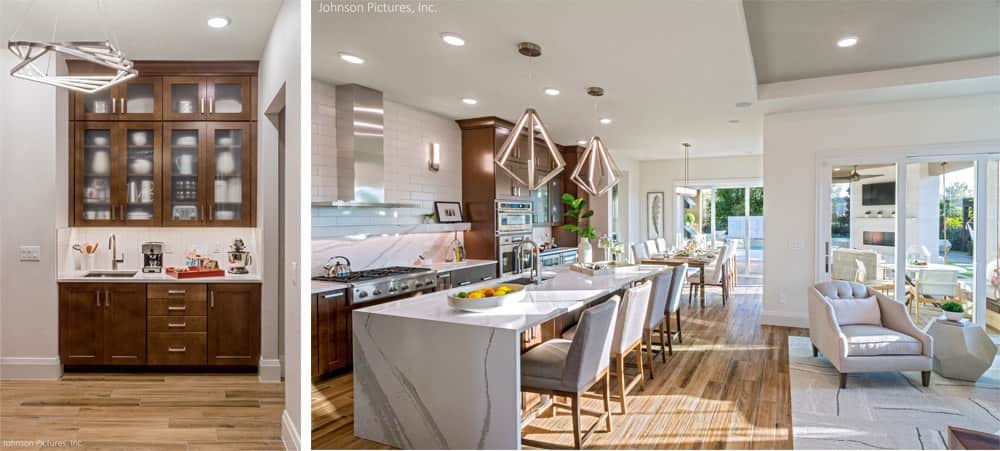Sure, you probably know terms like drapery and sconce, but what about arabesque or jute? If you are a builder, architect or in any way involved in the home building industry and work with interior design professionals, speaking the same language of interior design can help secure the success of any housing-related collaboration.
(We wouldn’t leave you hanging: jute is a plant used in natural fiber flooring, and arabesque is an ornamental design consisting of intertwined flowing lines.)
Design Concept Terminology
Common design concepts and phrases include:
Contrast. To avoid designs appearing flat and uninteresting, interior designers will create contrast by using opposite textures, light and dark colors, solids and patterns, etc.


Layered. The art of adding design elements to create a cohesive room aesthetic is called layering. Each level of the design, such as flooring, window treatments, furniture and accessories, adds another layer to the overall design strategy.
Open concept. This phrase is used to describe an unencumbered floor plan where multiple activities can take place. For example, having the kitchen, dining and living spaces all flowing into (and out of) each other.

Taylor Morrison’s NEXTadventure house. Photo courtesy of Lita Dirks & Co. 
Taylor Morrison’s NEXTadventure house. Photo courtesy of Lita Dirks & Co. 
Taylor Morrison’s NEXTadventure house. Photo courtesy of Lita Dirks & Co.
Open floor plan in full display in Taylor Morrison NEXTadventure home.
Textured. A room or object that has a tactile and/or visual appeal is often referred to as textured. This term can be used to describe the different fabrics, colors and/or patterns.
Furnishings Lingo
Interior designers use a variety of terms to describe certain types of furniture and furniture styles such as:
Case goods. This phrase refers to any furniture that isn’t upholstered.
Cabriole leg. This classic double curved wooden leg is used mostly for chairs and tables. The top curve is convex and bows out, while the second lower curve bows and tapers inward to a rounded wooden pad.
Wainscoting. The term wainscoting describes materials (usually panels) applied underneath a chair rail. It typically covers the bottom third of a wall.

Design and Professional Acronyms
Professional interior designers use a number of acronyms including:
AFF. The term Above Finished Floor (AFF) is used by the building industry to signify things like electrical outlets or to reference the height needed for a light fixture.
COM. Customer’s Own Material (COM) is a phrase used to communicate that a client wishes to select a different fabric than what the manufacturer provides or is ordering custom-made furniture.
KD. The phrase knock down (KD) refers to any furniture purchased that must be assembled.
MIRM and NCIDQ designations. To obtain the Master in Residential Marketing (MIRM) designation or National Council for Interior Design Qualification (NCIDQ), one must go through a rigorous certification process.
Almost all industries have their own special language. Interior design is no exception. By adding just a few interior design/merchandising-specific terms to your vocabulary, you can skip the orientation and focus on creating show-stopping designs with your team.
Post courtesy of Sue Ridgeway, Director of Marketing at Lita Dirks & Co., an interior design and merchandising firm based in Greenwood Village, Colo.
Follow Lita Dirks & Co. on Instagram, Facebook and LinkedIn for more inspiring interior design ideas.

